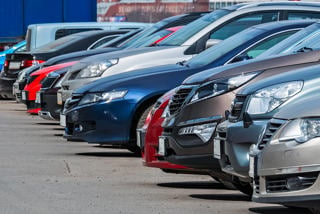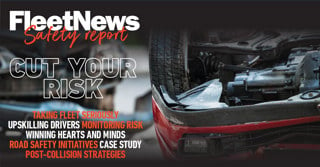Sandwell Borough Council’s Ground Care Unit
Key contact: Andy Pearsall, Borough Wide Service Manager
Fleet profile: 60 LCVs; 20 grey fleet cars
Business: Maintenance and cleaning of the Council’s parks and green spaces
Locations: Two main depots in Sandwell with smaller satellite sites across the borough.
Six main towns make up Sandwell – Oldbury, Rowley Regis, Smethwick, Tipton, Wednesbury and West Bromwich. Sandwell Borough Council’s Ground Care Unit is in the process of reducing its carbon footprint and saving council taxpayers money with the help of an Energy Saving Trust Green Fleet Review.
Sandwell is implementing a range of measures to reduce carbon emissions
and potentially cut fuel bills by half. These include:
• Vehicle downsizing
• Assessing the potential use of electric vans and biodiesel
• Introducing telematics and improving journey planning
Implementing a comprehensive road risk management programme to help improve health and safety is also a key initiative.
Cutting fuel bills and CO2
The Ground Care Unit is responsible for the cleaning and maintenance of parks and operates a fleet of 60 light commercial vehicles (LCVs) and 20 grey fleet cars (private vehicles used for business purposes). At the time of the Green Fleet Review, LCVs were travelling 440,000 miles a year and the grey fleet was responsible for 42,000 miles per annum.
Andy Pearsall, Service Manager, took on responsibility for fleet management in 2006. With local authorities under increasing pressure to reduce carbon emissions and growing media coverage of the negative impacts of climate change, Mr Pearsall was keen to reduce the environmental impact of his transport operation. He also wanted to find out how he could cut costs and improve efficiency.
The Green Fleet Review was the start of this process and the recommendations made in the report allowed Mr Pearsall to set a benchmark from which reductions in carbon emissions and fuel usage could be measured. He is now working towards reducing the Unit’s £90,000 annual fuel bill by up to 20 per cent, as well as reducing carbon emissions by the same amount.
Action areas
The implementation process began at the start of 2008 and ‘quick win’ measures have already been carried out. These include vehicle downsizing and training to encourage safer, stress free driving. An across-the-board review of risk management procedures has also started, including the collection of vehicle documentation relating to the grey fleet and putting in place procedures to carry out quarterly licence checks.
“We needed to cut costs and reduce our emissions, which is why we contacted the Energy
Saving Trust for advice.” Andy Pearsall, Borough Wide Service Manager, Sandwell Borough Council.
Future plans to bring further benefits
The next phase will include the introduction of telematics to improve journey planning and further vehicle downsizing is being considered. Alternative fuelled vehicles are also being assessed, with a biodiesel trial and an appraisal of electric vans planned for 2008.
The Green Fleet Review drew attention to grey fleet and the need to gain control over private car usage in order to improve health and safety. This will be brought to the attention of senior management as part of a Council-wide review of occupational road risk issues.
Mr Pearsall is committed to implementing these measures and believes that if targets are met, they will have a wider impact beyond his fleet. He said: “If these changes result in the cost savings and carbon reductions we expect, I think the rest of the Council transport operation will stop and take notice. If this happens, I hope to see further changes implemented throughout the Council.”
Leading by example
As the need to address climate change becomes increasingly important, local authorities have a crucial role to play in terms of local carbon reduction strategies. For Sandwell Borough Council, implementing a Green Fleet Review was a means of rising to this challenge and demonstrating their commitment to environmental improvement. The opportunity to cut costs and reinvest money back into the local community was also an attractive proposition.
With this in mind, Mr Pearsall said: “I knew we needed to cut costs and reduce our emissions, which is why we contacted the Energy Saving Trust for advice.” Commenting on the overall experience of the Review, he added: “The report provided evidence for change with clearly defined measures that we could implement over a period of time. The biggest challenge, as always, is to change long established procedures and practices. The information and guidance we received was essential to help us move forward.
“The programme for change works on so many different levels – from cutting costs and reinvesting money back into Council services, to helping the environment and reducing health and safety risks. When you consider these benefits you realise this is something all local authorities and businesses should be doing.”
Source: Energy Saving Trust
Environment - Sandwell Borough Council
- 24 February 2010
- Feature




















Login to comment
Comments
No comments have been made yet.